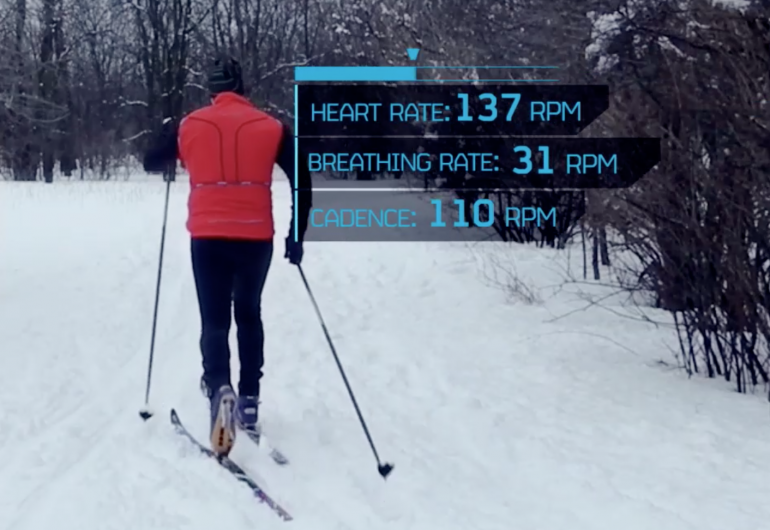Wearable devices may be helping the everyday Joe count steps to shed some pounds but for Olympic athletes they are tools which can help them earn a gold medal. One of these devices is Montreal’s Hexoskin, the first wearable to track movement, respiration and heart activity.
Hexoskin has been used by many athletes on the Canadian Olympic team to help optimize their performance during training for the games in Sochi. Among them are the Dufour-Lapointe sisters who took home the gold and silver metals in the Woman’s Moguls event last Saturday as well as biathletes Marc-André Bédard and Claude Godbout.
It is no surprise that athletes are gravitating towards a wearable device such as Hexoskin. This sensor-equipped sports garment is designed to provide much deeper insight into a sports performance compared to the step and calorie counting devices that make up most of the wearable market today. The shirt can monitor a user’s heart rate variability, breathing rate, step count and cadence, activity intensity and heart rate recovery and can record more than 3 million data points per hour which can be viewed on a connected device like a smartphone.
In a video on their YouTube channel, Hexoskin shows biathlon athlete Bédard simulating ski trails using a treadmill and TV screen while hooked up to their wearable device to collect performance data. The simulation is meant to train him on the exact track he will be competing in Sochi and with the wearable device he is able to help manage his activity intensity and recovery.
Recovery is key for athletes both during game play as well as in training. Hexoskin’s CEO Pierre Fournier explained to us in an interview that recovery was the one metric Olympic coaches were most interested since continuing intense activity without the proper recovery can have negative consequences. In addition, in sports like the biathlon, optimizing recovery at key points like skiing downhill or before shooting can make or break a game.
Over the years, athletes have used heart rate monitors and GPS devices to get access to data they can use to better their performance. But the onset of cheaper, connected and better-designed wearable devices is changing professional training completely, Hexoskin being a great example of this.

